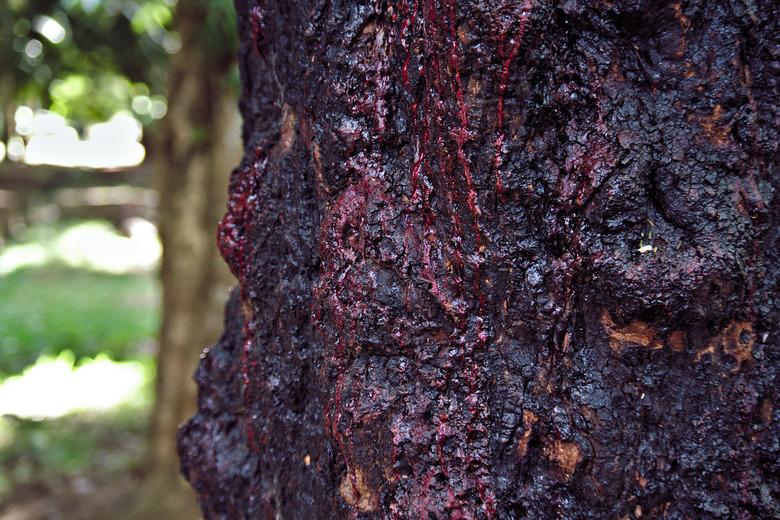What Is A Bleeding Tree?
Trees do bleed, but the reasons for the bleeding vary depending on the tree. Some trees, such as dragon's blood (Dracaena draco, USDA zones 10-11) and bloodwood (Tectonia grandis, zones 10-12) trees, are considered "bleeding trees" due to the red sap or liquid inside the trees. The other type of bleeding refers to sap secretion in fruit trees. Unlike the naturally occurring red sap, when a tree secretes sap it is an indication of an injury called gummosis.
What Is a Dragon’s Blood Tree?
What Is a Dragon's Blood Tree?
Also known as the Socotra dragon tree, the dragon's blood tree is found in the Dragonsblood forest of Yemen. The tree gets its name thanks to its legendary red resin that is used to solve a variety of ailments and is considered an anti-diarrhea, anti-ulcer, anti-microbial, anti-viral, anti-inflammatory and anti-oxidant substance, among other things. Legend has it that the resin was also used as a dye referred to as dragon's blood, and it was the source of the intense color of Stradivarius violins.
The dragon's blood tree is believed to be centuries old, and it has developed an unusual shape, resembling an open umbrella, that is key to its survival. During monsoon season, the leaves absorb the moisture from drizzles and sea mists and pass the liquid down to its roots. The umbrella shape serves as a canopy, providing the roots with ample shade.
What Is a Bloodwood Tree?
What Is a Bloodwood Tree?
If you cut into a wild teak tree, you will see a dark-red liquid dripping down the trunk. The liquid is actually red sap, which is created by tannins – the same as what is found in wine. Therefore, wild teak trees have become commonly known as bloodwood trees. While it is unusual for a plant to "bleed" when it is cut, the bloodwood tree's red sap is designed to coagulate and seal wounds just like human blood.
These trees are native to South Africa, and local tribes believe that the red sap is magical. The sap of wild teak trees is believed to help women increase their supply of breast milk and treat diseases such as malaria and ringworm as well as sharp pains.
Why Do Certain Trees Bleed Sap?
Why Do Certain Trees Bleed Sap?
If a stone fruit tree is bleeding sap, it's due to a disease called gummosis. The sap will flow from the tree's injury and can be caused by either a bacterial or perennial canker. Wounds to the tree, such as winter damage, environmental stress, disease damage, damage from a gardening tool or insect infestation, can also result in gummosis.
Initial signs of gummosis include new leaves turning yellow and lesions developing on the bark that begin to ooze an amber-colored sap. As the disease advances, curly orange threads, which are actually fungal chains, may begin to grow from the bark, and leaves may turn brown and start to drop. While the disease spreads, it begins to kill the wood under the cankers, which may result in entire branches dying. If the disease infects the tree's trunk, then the tree can die.
How to Treat and Prevent Gummosis
How to Treat and Prevent Gummosis
The sooner you recognize gummosis and begin treatment, the better. The first step is to repair any drainage problems by adjusting the soil or transplanting the tree. Make sure to remove any darkened, diseased bark as well as a strip of the healthy bark. Let the area dry completely and continue to check the area, repeating the process if needed.
Preventing gummosis involves several strategies. When selecting a fruit tree, choose a variety that matches your region's hardiness zone and is more resistant to cankers. Next, take care when selecting an area to plant your tree by choosing well-drained soils and avoiding windy areas.
Trees do need care, and to prevent cold damage during the first three years of a tree's life, paint the trunk with a latex paint. For ongoing care, make sure to prune diseased branches to prevent insect damage. When tending to your yard, be careful not to damage the trunk with weed whackers, lawn mowers or other garden equipment.
